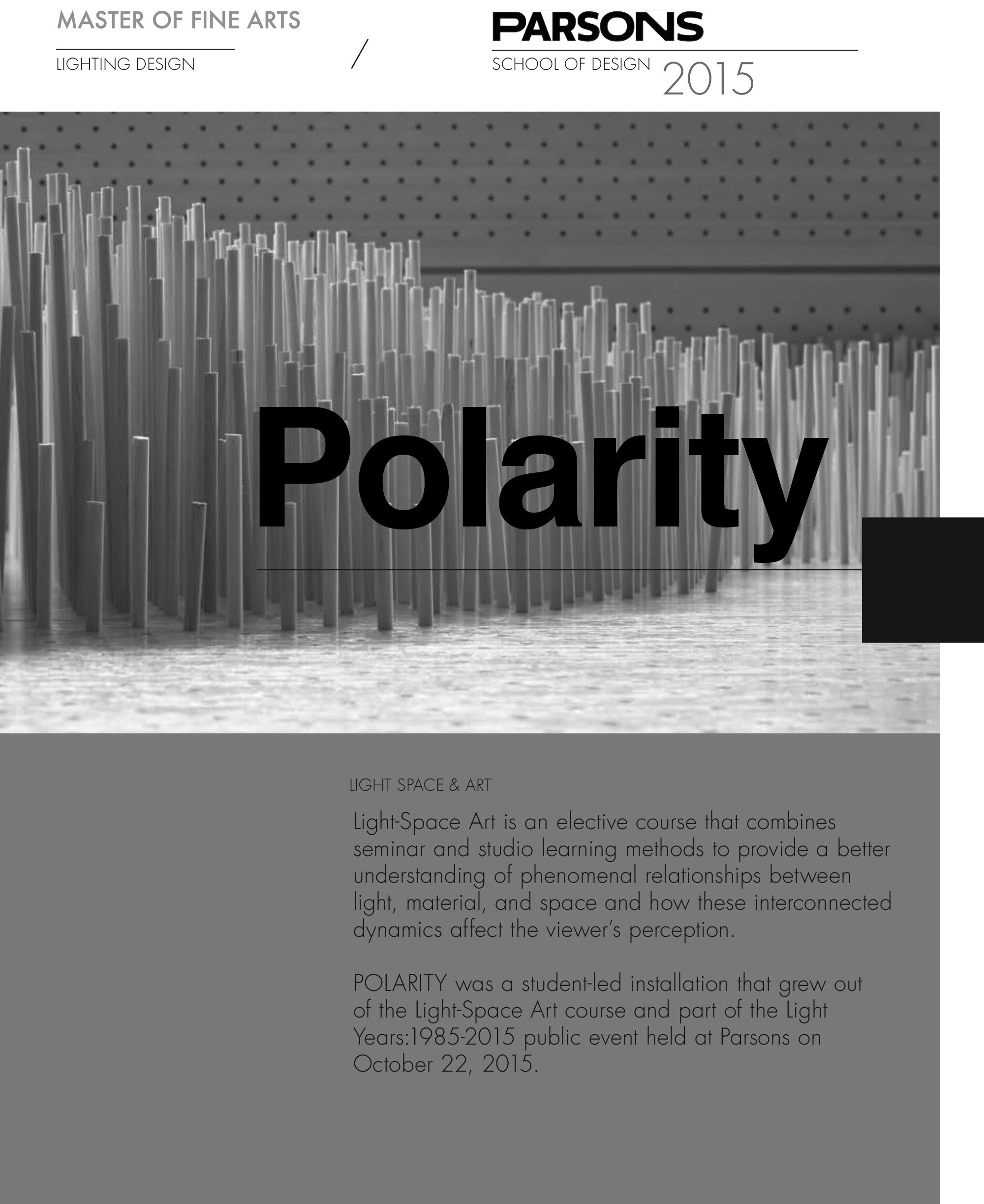LIGHT SPACE ART - FALL 2015
Polarity
Parsons presented Light Years: 1985 – 2015 – 2045 on October 22, 2015 as a celebration of 30 years since the first cohort of students graduated from Parsons School of Design’s Masters of Fine Arts in Lighting Design program. The conference addressed the changes in lighting technology, socio-cultural conditi0ns, and the evolution of the lighting design profession and education between 2085 and 2015. It also provided a student led discussion of projected changes in thought and practice in the lighting industry over the next 30 years between 2015 and 2045.
The 1818 square-foot rectangular space for Polarity possessed striking inherent characteristics that defined the project's approach. It was important to introduce a response-based intervention that would alter the viewer’s perceived understanding of the site.
In order to enhance existing traits of the space, opposition was introduced as a agent of comparison. We overlaid an undulating topographical landscape onto an otherwise flat and highly ordered planar surface. Details of scale, pattern and material were carefully studied in order to ensure clarity. Controlling these factors was balanced with a willingness for each student to explore personal variation in pattern and surface.
Through multiplicity, individual banal components (the dowels) transcend normal identity to configure a new whole that is at once a composite of its component parts and a landmass of light and shadow configured through the viewer’s perception. Embracing the monochromatic nature of the space, Polarity introduced a single material (wooden dowel) as an extension of the wall surfaces and as an intervening agent to reveal unique light and shadow patterns on the two opposing longitudinal walls. Dowels of different lengths were inserted as an antonym to the void it filled. The flat manufactured walls surface shifted to a flowing organic three-dimensional relief.
The Light Space Art elective includes students from multiple disciplines and schools across Parsons School of Design. Phenomenal relationships between light, material, and space are explored along with the effects these dynamically shifting forces have on human perception. Empirical experiments are conducted through physical constructs so that the students experience first-hand a variety of human perceptual responses. many of the spatial, theoretical and material experiments conducted early in the semester converge in the final installation. Response to the unique site attributes, light relationships and conceptual intent are considered in relation to the physicality of the work and fabrication details.
Faculty:
Derek Porter, Parsons School of Design School of Constructed Environments
Students:
Gabriela Cerro, MFA Interior Design
Selin Ergeneli, MFA Lighting Design
Aditi Govil, MFA Lighting Design
Anqi Huang, MFA Interior Design
Samuel Hewett, MFA Lighting Design
Pei-Ying Lin, Masters of Architecture
Ashley Mathews, Master of Architecture and MFA Lighting Design
Abeer Nowailaty, MFA Lighting Design
Sergio Taveras, Master of Architecture and MFA Lighting Design
Elisa Rothenbühler, MFA Interior Design and Lighting Design
Nura Venta, MFA Lighting Design
Billy Wong, Master of Architecture and MFA Lighting Design
Kama Wybieralska, MFA Lighting Design

